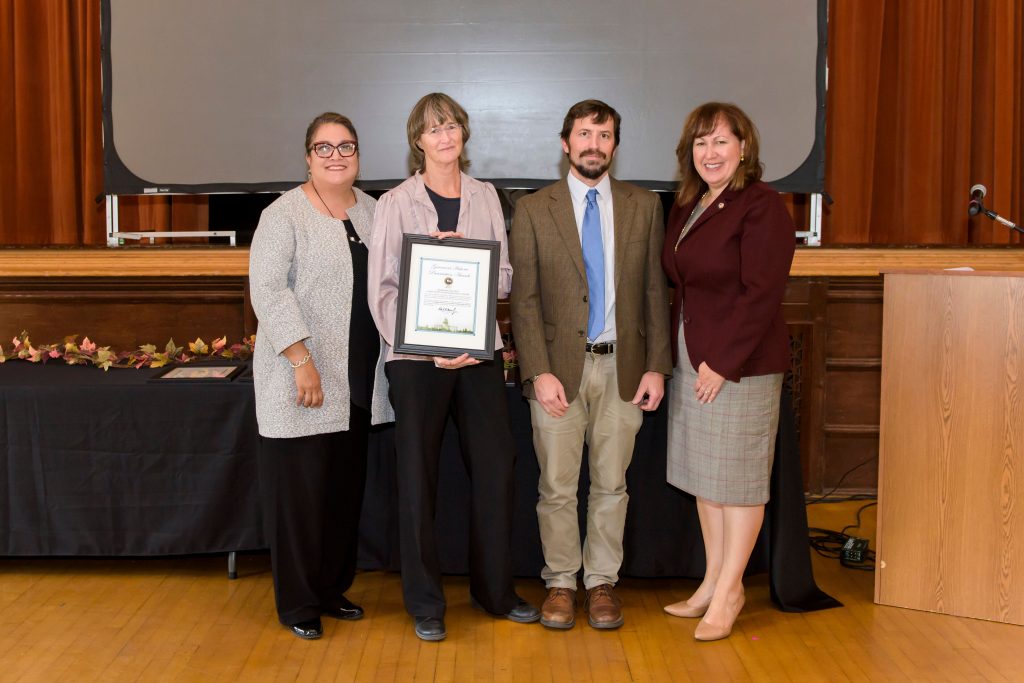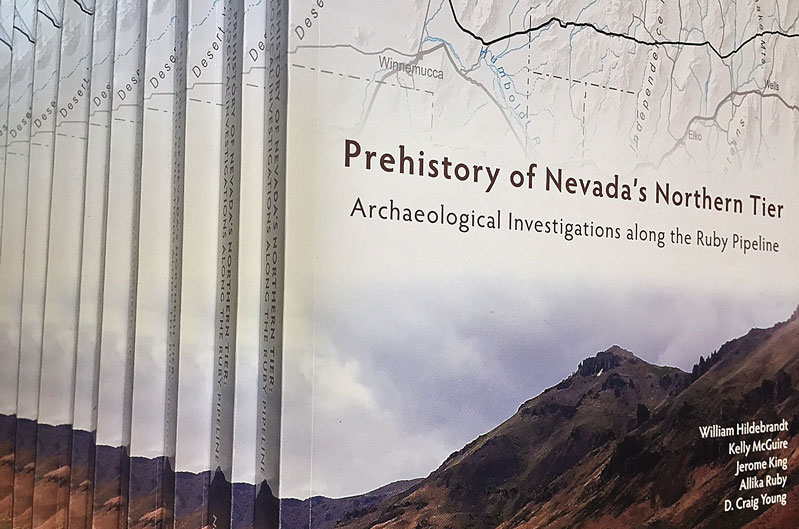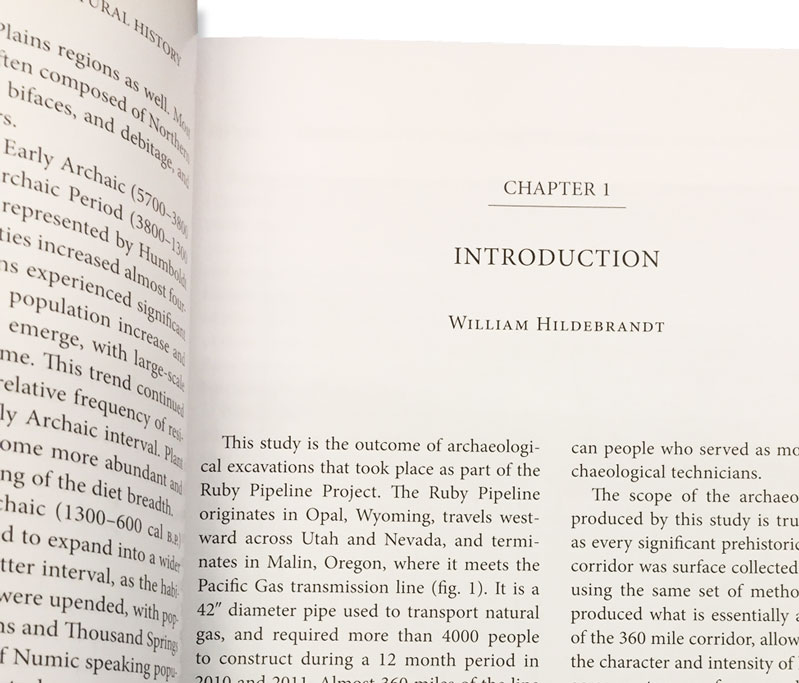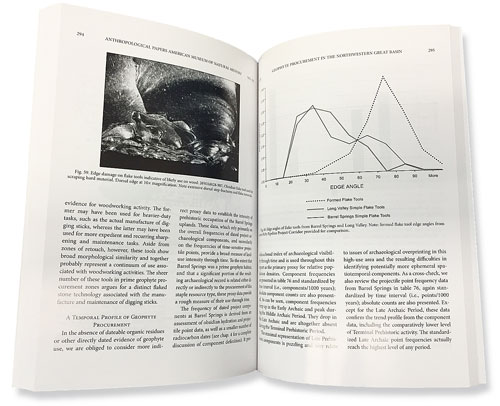Far Western receives one of the coveted 2017 Governor’s Historic Preservation Awards for their work at archaeological site CA-SBA-1703, resulting in the document Salvaging the Past: A Case Study in Archaeological Inquiry. The California Office of Historic Preservation and State Parks and Recreation identified the document as an “excellent model for this kind of documentation and sharing of important resources.”
The report, authored by Allika Ruby and Patricia Mikkelsen, was a collaborative effort. Supporting authors included Philip Kaijankoski, Eric Wohlgemuth, Angela Arpaia, Lucas Martindale Johnson, Andrew Ugan, William Hildebrandt, John R. Johnson, and Nathan Stevens. Terry Joslin with the California Department of Transportation was involved throughout, as were Barbareño Chumash representatives who monitored all excavation work—Gilbert Unzueta, Isa Folkes, and David Dias.
Project Background
Salvaging the Past: A Case Study in Archaeological Inquiry 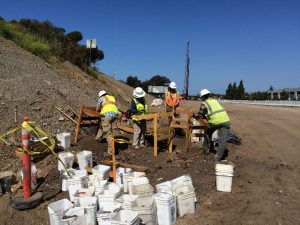
The Las Vegas and San Pedro Creeks Capacity Improvements Project involved culvert replacement for flood control along US Route 101 near the city of Goleta, Santa Barbara County. A huge box culvert lay in a rechanneled drainage, stretching under railroad tracks, multi-lane Route 101, and an off-ramp. There were also two known sites either side of the highway, in a very urban environment, one occupied early in time—CA-SBA-1703—the other a named ethnographic village—S’axpilil’s (SBA-60). The sites are just north of Goleta Slough at the confluence of two creeks, an area with archaeological evidence shoring focused settlement for thousands of years.
Far Western was tasked with conducting salvage data recovery operations, within time, budget, weather, and safety constraints. The theme of the work became site persistence—
How could any intact cultural deposits survive in such an environment?
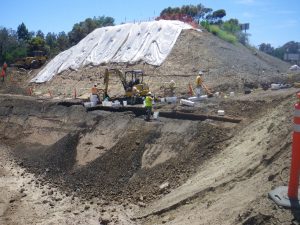
Through experience and skill, geoarchaeologist Phil Kaijankoski identified intact versus disturbed deposits. We then quickly developed a work plan to recover maximum information in a hectic environment using appropriate and diverse field techniques.
Back at the lab, we analyzed and interpreted the data, focusing on the identification of discrete temporal components. We had to determine if the deposit was associated with SBA-60 or SBA-1703; it was geographically right in-between. Geoarchaeologist Kaijankoski noted that the newly identified deposit lay on an ancient fan, as did SBA-1703, whereas SBA-60 sat on a youthful floodplain. Initial dating and artifact analyses confirmed the site deposit on the western slope was clearly associated with the older occupation at SBA-1703, dated to around 3700-2400 cal BP. A few Late Period artifacts, especially in the mixed eastern slope, indicated some overlap between the two sites.

Public Outreach Efforts
Given diverse, abundant artifacts, along with intact features, Far Western was able to undertake in-depth analyses and focus on addressing current avenues of research. The data presentation was geared to students of cultural resource management as the project highlighted the persistence of intact cultural resources in highly disturbed environment, and innovative methods to retrieve, analyze, and document findings.
The project presented such an important learning opportunity, that Far Western felt obligated to share it as much as possible, in a format that was readable, educational, and exciting. Therefore, a visually appealing document specifically geared to archaeology students focusing on cultural resources management and contract archaeology was created.
It includes:
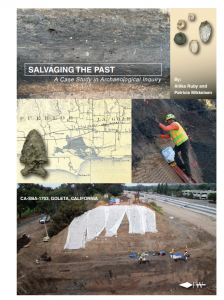
- perspectives on site preservation in an urban environment
- excavation strategies adapting to special conditions
- local and regional environmental reconstruction focusing on Goleta Slough
- relevance to biological, geological, archaeological, and
- environmental studies
- complex kinship studies based on mission records that connect Chumash individuals from the village of S’axpilil’s to Chumash rancherias
- innovative field techniques that adjust for conditions and findings and emphasize the importance of temporal components
- an in-depth study of geoarchaeology, noting the importance of a study of soils and soil transitions, is important to geologists and archaeologists.
Study questions were also prepared, relating to important aspects of the field work and research. Far Western provided the report and study questions to seven regional institutions to be incorporated into lesson plans; they have already been used in several classroom settings, with positive feedback.
Another key component of the project was the presence of the local Native American community. The monitors were provided copies of the case study; each encouraged the use of Salvaging the Past in archaeology classrooms. The ethnographic studies of Dr. John R. Johnson for this project emphasize the larger social network that existed at the time. This information is only available from extensive mission record studies.

